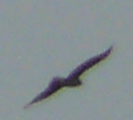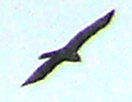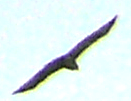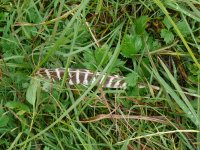
Habitat: river, meadows, forest
1. Not a kestrel, jizzwise. The lack of a prominent moustachial stripe (1.3) excludes the hobby and the peregrine. It flew high above the ground and made a few circles, so it was not a merlin. It had a brownish tinge on the upper wing feathers (1.4), so maybe it was a juvenile red-footed falcon?
(By the way, does anyone have a working knowledge of what eBird considers a 'small falcon sp.' vs a 'large falcon sp.'?)
(One more falcon-related question: One day this summer I was outside my house in Warsaw hanging laundry when I saw a falcon weaving between a tree and the corner of the house in pursuit of some smaller bird a mere four metres away from me. It was roughly the size of a kestrel, but it clearly had a mottled brown, and not mottled chestnut, back. I was wondering if it could have been a female/juvenile merlin. The habitat mostly consists of meadows dotted with trees.)
2. A diamond-shaped gleaming white tail without a tail band, long outer primaries, rather uniformly brown wings and a large size make me think it should be a slam-dunk white-tailed eagle.
3. I failed to see the bill colour of this egret, as I was too preoccupied with the camera to use my bins. I remember that the neck bulged out noticeably, but that doesn't serve to separate the two species from one another just yet. I do, however, think that it might have been a great egret rather than a little egret on account of the bird's size (unreliable but possible to estimate from the last two photos). When it took off to leave for good complete with its wings spread wide (not pictured), it gave me the impression of being roughly as big as grey heron would be and maybe even as large as a crane.
4. Probably either two common buzzards or two march harriers or maybe one bird of each species? The file names are assigned pretty much at random based on the order of the photos and some anecdotal information (I tried to subjectively judge the wing shape, breadth and length, the tail length, or the angle between the wings).
(Please note that most of the photos are grouped into bursts of three. Also, lightening up a photo has at times given its subject a more lanky appearance.)
(Recordings No. 1.2, 1.3, 1.4, 1.5 and 1.6 contain various sounds that, I believe, were made by some raptors at the site, and which may aid their identification. I run them all through a voice recognition app and recording No. 1.4 came out positive for a marsh harrier. However, there were quite a few jays nearby, so they might be responsible for at least some of the 'raptor' calls.)
(I've also found a feather, but I think it belongs to a kestrel, and hence it probably won't be of much use.)
5. At the river, I saw a small brownish bird with white outer tail feathers. It flew away and landed in the grass, and thus, given the absence of reeds, I excluded the reed bunting (I only saw the back of the bird, so I had no chance to look at the bill). After I came closer, I noticed that there was a whole flock of around fifteen of these birds. When flushed, they took to the air, flew around a bit and then dropped back into the grass not far away from where they had begun. At one point, I heard what could be described as 'pip-it' calls; unfortunately, I only managed to record the very end. Still, skylarks seem to have a similar, if more melodiouos, two-note call. BirdNET detected meadow pipits in recording No. 1.4 as well, and, after listening carefully, I think I can hear these same calls again. Is it possible to confirm a flock of fifteen meadow pipits based on this evidence?
(I didn't use to realise that skylarks and meadow pipits share the white tail sides in addition to their similar behaviour and habitat, which saw me chuck out a sizable chunk of my (still only few) skylark records).
1. Not a kestrel, jizzwise. The lack of a prominent moustachial stripe (1.3) excludes the hobby and the peregrine. It flew high above the ground and made a few circles, so it was not a merlin. It had a brownish tinge on the upper wing feathers (1.4), so maybe it was a juvenile red-footed falcon?
(By the way, does anyone have a working knowledge of what eBird considers a 'small falcon sp.' vs a 'large falcon sp.'?)
(One more falcon-related question: One day this summer I was outside my house in Warsaw hanging laundry when I saw a falcon weaving between a tree and the corner of the house in pursuit of some smaller bird a mere four metres away from me. It was roughly the size of a kestrel, but it clearly had a mottled brown, and not mottled chestnut, back. I was wondering if it could have been a female/juvenile merlin. The habitat mostly consists of meadows dotted with trees.)
2. A diamond-shaped gleaming white tail without a tail band, long outer primaries, rather uniformly brown wings and a large size make me think it should be a slam-dunk white-tailed eagle.
3. I failed to see the bill colour of this egret, as I was too preoccupied with the camera to use my bins. I remember that the neck bulged out noticeably, but that doesn't serve to separate the two species from one another just yet. I do, however, think that it might have been a great egret rather than a little egret on account of the bird's size (unreliable but possible to estimate from the last two photos). When it took off to leave for good complete with its wings spread wide (not pictured), it gave me the impression of being roughly as big as grey heron would be and maybe even as large as a crane.
4. Probably either two common buzzards or two march harriers or maybe one bird of each species? The file names are assigned pretty much at random based on the order of the photos and some anecdotal information (I tried to subjectively judge the wing shape, breadth and length, the tail length, or the angle between the wings).
(Please note that most of the photos are grouped into bursts of three. Also, lightening up a photo has at times given its subject a more lanky appearance.)
(Recordings No. 1.2, 1.3, 1.4, 1.5 and 1.6 contain various sounds that, I believe, were made by some raptors at the site, and which may aid their identification. I run them all through a voice recognition app and recording No. 1.4 came out positive for a marsh harrier. However, there were quite a few jays nearby, so they might be responsible for at least some of the 'raptor' calls.)
(I've also found a feather, but I think it belongs to a kestrel, and hence it probably won't be of much use.)
5. At the river, I saw a small brownish bird with white outer tail feathers. It flew away and landed in the grass, and thus, given the absence of reeds, I excluded the reed bunting (I only saw the back of the bird, so I had no chance to look at the bill). After I came closer, I noticed that there was a whole flock of around fifteen of these birds. When flushed, they took to the air, flew around a bit and then dropped back into the grass not far away from where they had begun. At one point, I heard what could be described as 'pip-it' calls; unfortunately, I only managed to record the very end. Still, skylarks seem to have a similar, if more melodiouos, two-note call. BirdNET detected meadow pipits in recording No. 1.4 as well, and, after listening carefully, I think I can hear these same calls again. Is it possible to confirm a flock of fifteen meadow pipits based on this evidence?
(I didn't use to realise that skylarks and meadow pipits share the white tail sides in addition to their similar behaviour and habitat, which saw me chuck out a sizable chunk of my (still only few) skylark records).
Attachments
-
 1.1 (falcon).png3 KB · Views: 19
1.1 (falcon).png3 KB · Views: 19 -
 1.2 (falcon).png5.2 KB · Views: 22
1.2 (falcon).png5.2 KB · Views: 22 -
 1.3 (falcon).png20.4 KB · Views: 23
1.3 (falcon).png20.4 KB · Views: 23 -
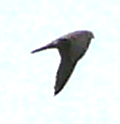 1.4 (falcon).png13.8 KB · Views: 22
1.4 (falcon).png13.8 KB · Views: 22 -
 2.1 (white-tailed eagle).png14.1 KB · Views: 21
2.1 (white-tailed eagle).png14.1 KB · Views: 21 -
 2.2 (white-tailed eagle).png11.7 KB · Views: 20
2.2 (white-tailed eagle).png11.7 KB · Views: 20 -
 2.3 (white-tailed eagle).png7.1 KB · Views: 17
2.3 (white-tailed eagle).png7.1 KB · Views: 17 -
 2.4 (white-tailed eagle).png15.2 KB · Views: 16
2.4 (white-tailed eagle).png15.2 KB · Views: 16 -
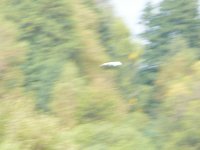 3.1 (great egret).JPG1.2 MB · Views: 18
3.1 (great egret).JPG1.2 MB · Views: 18 -
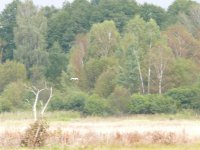 3.2 (great egret).JPG1.5 MB · Views: 18
3.2 (great egret).JPG1.5 MB · Views: 18 -
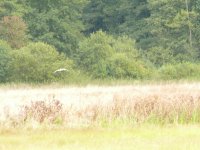 3.3 (great egret).JPG1.5 MB · Views: 15
3.3 (great egret).JPG1.5 MB · Views: 15 -
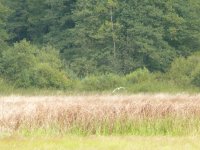 3.4 (great egret).JPG1.5 MB · Views: 15
3.4 (great egret).JPG1.5 MB · Views: 15 -
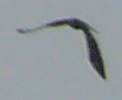 4.1.1 (marsh harrier).png17.9 KB · Views: 15
4.1.1 (marsh harrier).png17.9 KB · Views: 15 -
 4.2.1 (marsh harrier).png12.4 KB · Views: 12
4.2.1 (marsh harrier).png12.4 KB · Views: 12 -
 4.2.2 (marsh harrier).png3.9 KB · Views: 10
4.2.2 (marsh harrier).png3.9 KB · Views: 10 -
 4.2.3 (marsh harrier).png4.7 KB · Views: 11
4.2.3 (marsh harrier).png4.7 KB · Views: 11 -
 4.3.1 (marsh harrier).png4.9 KB · Views: 10
4.3.1 (marsh harrier).png4.9 KB · Views: 10 -
 4.3.2 (marsh harrier).png14.7 KB · Views: 10
4.3.2 (marsh harrier).png14.7 KB · Views: 10 -
 4.3.3 (marsh harrier).png3.9 KB · Views: 18
4.3.3 (marsh harrier).png3.9 KB · Views: 18




